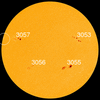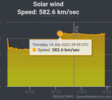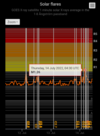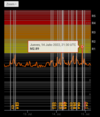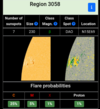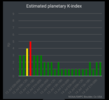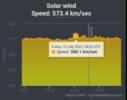Third period of Geomagnetic storm in progress

SpaceWeatherlive.com
Current Conditions at 03:25 UTC july 08
▪︎Solar wind speed record: 407.7 km/sec
▪︎density: 14.97 protons/cm3
GEOMAGNETIC STORM RESUMES: A co-rotating interaction region (CIR) hit Earth's magnetic field on July 7th, sparking a G1-class geomagnetic storm. The storm subsided for a while, but now it's happening again. SpaceWeather.com
SpaceWeatherlive.com
Current Conditions at 03:25 UTC july 08
▪︎Solar wind speed record: 407.7 km/sec
▪︎density: 14.97 protons/cm3

